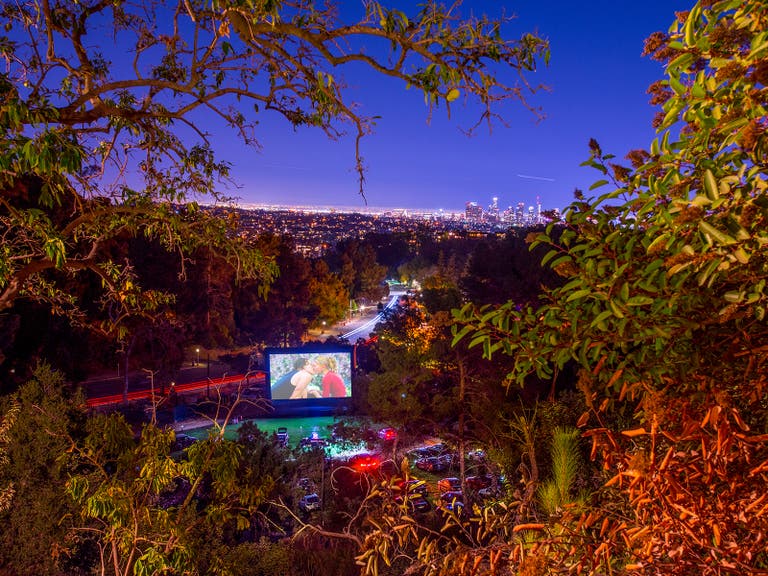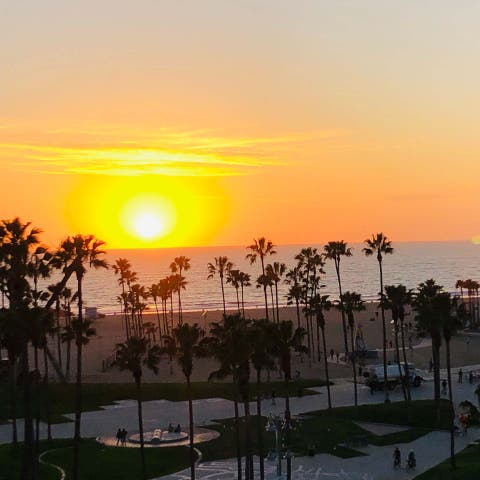The Sunset Strip: The Story of An LA Icon
Part One: Crescent Heights to La Cienega

Every world-class city has its adult “Fun Zone,” legendary spaces where every era’s ideas of fun happened in dizzying succession—and left telling layers. In Los Angeles, few locations can even come close to the title of adult Fun Zone through the ages than the world-famous Sunset Strip. The words “iconic” and “legendary” can be overused, but in the case of the 1.5-mile stretch of Sunset Boulevard between West Hollywood and Beverly Hills, those words seem like understatements.
Stand anywhere on the Strip, and you’ll likely be standing on or very near a place where bootleg liquor and makin’ whoopee gave way to hidden roulettes and swanky affairs, which gave way to go-go cages and stoned soul nighttime picnics, which gave way to a lot of spandex and male mascara, and so on until the current era of EDM and bottle service.
The Sunset Strip is where Los Angeles has forever come out to blow off steam, spend small fortunes, engage in various forms of hanky panky, see and be seen, avoid paparazzi, do anything to be shot by paparazzi, gamble, cavort, couple, uncouple (consciously and otherwise), get high and get low.
The layers on the Strip go pretty deep—the most accurate description for it is the ancient literary word “palimpsest,” which describes when so many people have written over a piece of parchment that you can see all the different texts from the all the different ages at once. Also, every Sunset Strip survivor who shares his or her war stories talks of “ghosts,” not only in the sense of the famously dead who haunt the area (Marilyn Monroe, Jim Morrison, John Belushi, River Phoenix, etc.) but more broadly in the sense of a place relentlessly haunted by all of yesterdays’ parties—and today’s and tomorrow’s.
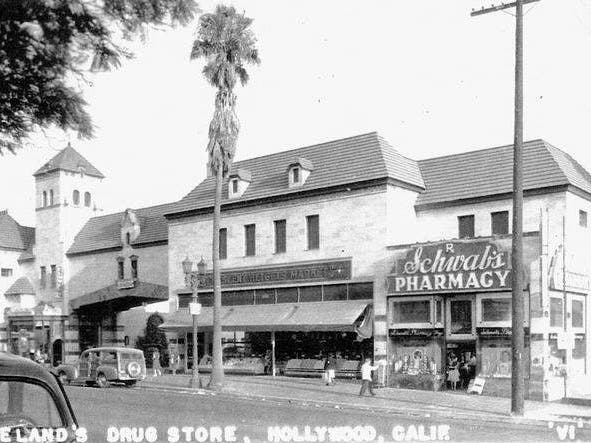
Part I: Crescent Heights to La Cienega
Start on the eastern boundary of the Strip, where Crescent Heights Boulevard meets Sunset. Look east towards Hollywood and you’ll see the former location of Schwab’s Pharmacy on the southeast corner, where the 8000 Sunset shopping mall now sits. Catch an indie movie at the AMC Sunset 5 and know you’re right over Schwab’s, where movie stars, aspiring starlets and actors, and movie executives all mingled over a fountain soda from the 1930s to the 1950s - “waiting for the gravy train,” as a character says in Billy Wilder’s “Sunset Boulevard.” A little further east, on the north side of Sunset, the Laugh Factory is one of the two Strip comedy clubs offering a nightly roster of top standup talent.
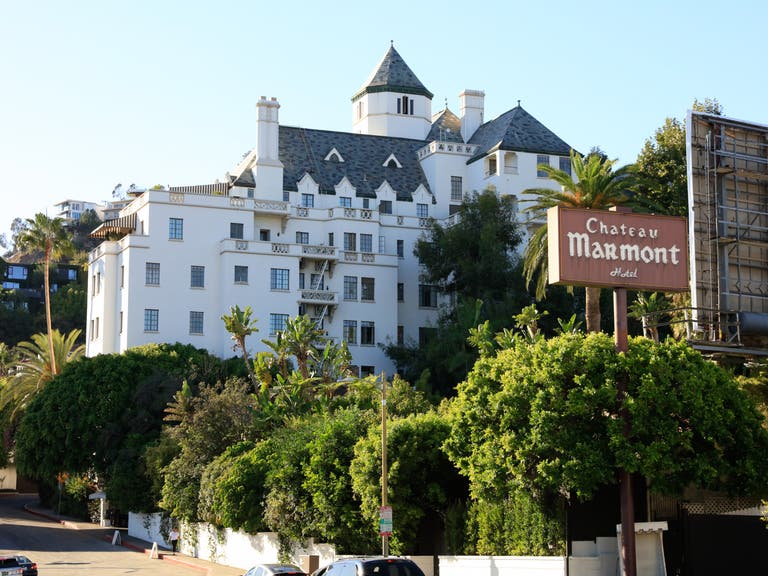
Now look west: on one side you have the famed Chateau Marmont. Brunch at the Chateau’s courtyard restaurant is a peerless Hollywood experience - be sure you make reservations. The landmark hillside castle is currently a pricey (though classically no-frills) hotel, but it's had many ups and downs throughout its existence. The current incarnation pays homage to its history, with the rooms, the penthouse and the bungalows (where innumerable screenplays have been written and perfected by boozy screenwriters working around the clock) having been restored to mid-century bohemian chic.
Next door, the space that housed Bar Marmont (which closed at the end of March 2017) was in the early 1970s the first location of Rodney Bingenheimer’s glam-obsessed E-Club, which later moved east of the Strip and was renamed Rodney’s English Disco.
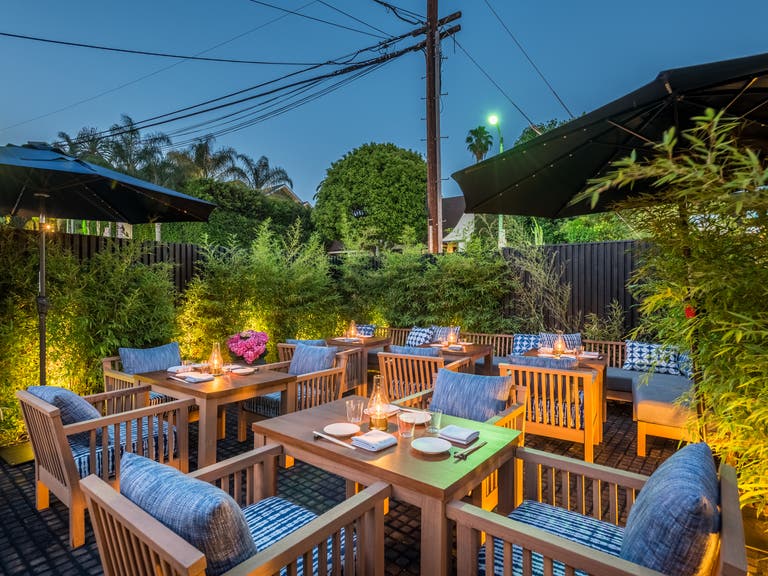
In July 2018, Reika Alexander of New York City’s acclaimed EN Japanese Brasserie collaborated with the Chateau Marmont to open Chateau Hanare in a vacant bungalow at the landmark hotel. Chateau Hanare specializes in kaiseki, a style of multi-course Japanese service that incorporates many cooking methods.
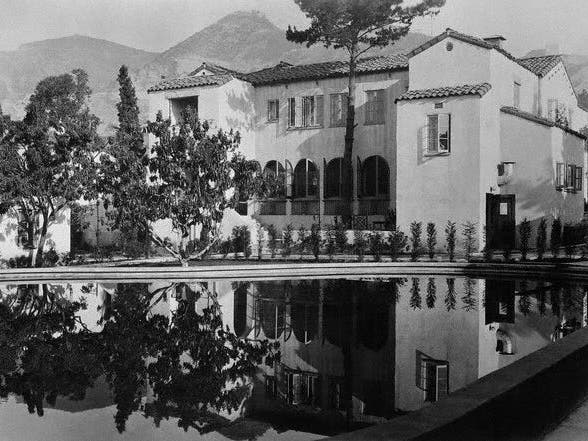
The original location of the Garden of Allah is across the street, between Havenhurst and Crescent Heights. This hotel/apartment complex featured private villas from the 1920s to the 1950s, where pretty much every star of the day spent many a storied night. After making its mark on countless novels, movies and gossip columns, the Garden of Allah was demolished in 1959 and turned into a mid-century modern bank and shopping mall. The bank building is still being used (it’s currently a Chase), but is being redeveloped as part of a Frank Gehry-designed mixed use project at 8150 Sunset Blvd.
The intersection was also the area where the underground rock club Pandora’s Box was located and the site of the 1966 “Riots on Sunset Strip,” memorialized by the Buffalo Springfield with their song “For What It’s Worth.”
In the 1960s and 1970s, on both sides of Sunset just past the Chateau there were two rotating statues welcoming people to the Strip: a Cowgirl (prominently featured on the 1970 camp classic Myra Breckinridge), and the beloved Rocky and Bullwinkle, which the West Hollywood City Council recently unanimously decided to reinstall on the traffic island at Holloway and Sunset.
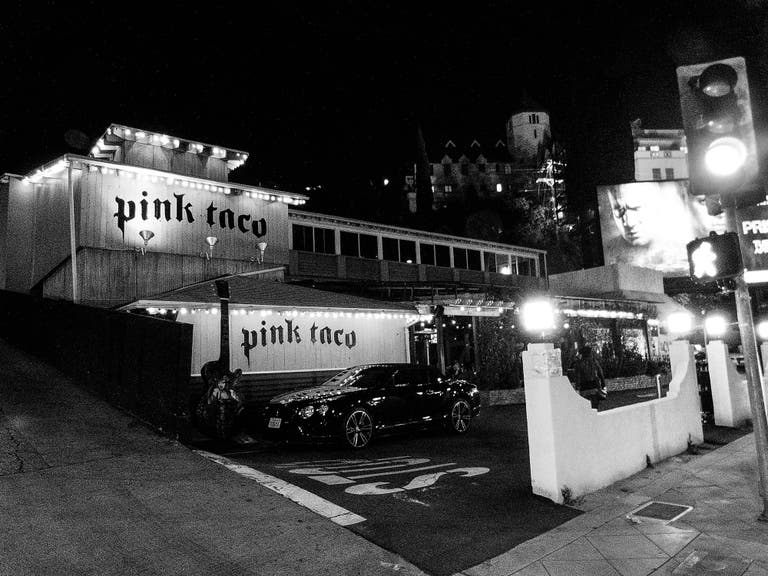
Grab some Mexican food at Pink Taco and look at the balconied structure that currently houses it. That same building was The Players Club in the 1930s and 1940s, a place for swanky gents and dames to be seen. The Players, under the name The Dancers, is the one classic Strip location to feature as a location in two Raymond Chandler novels: The Little Sister (1949), Chandler’s underrated, must-read novel of classic Hollywood; and his 1953 masterpiece, The Long Goodbye.
Chandler’s ambivalent view of the Strip shows a popular concern from the 1930s to the 1950s: that the Strip was overrun by mobsters running all kind of vice rackets and that “Chicago had moved into Los Angeles” in that very area. This is the Strip of Mickey Cohen, LA’s most notorious gangster, and the world of cops, hoodlums and celebrities depicted in several James Ellroy novels and their modern film adaptations, like L.A. Confidential and The Black Dahlia.
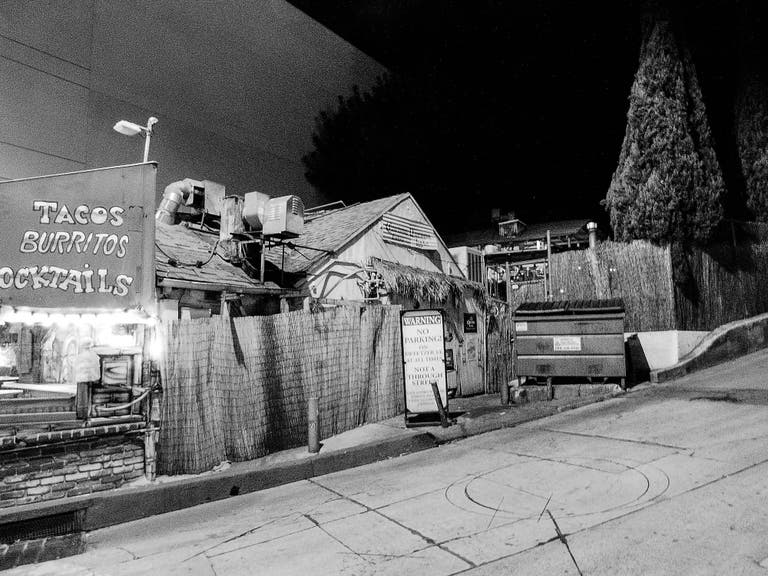
Past Pink Taco (and the Room Escape building that used to house definitive disco-era record label Casablanca Records), we reach Cabo Cantina. The same building in the 1960s and '70s was The Source vegetarian restaurant run by Fader Yod and his Aquarian Family, and is also the location where Woody Allen makes fun of healthy L.A. food in Annie Hall. The train car diner, Carney’s has been there since the 1970s.
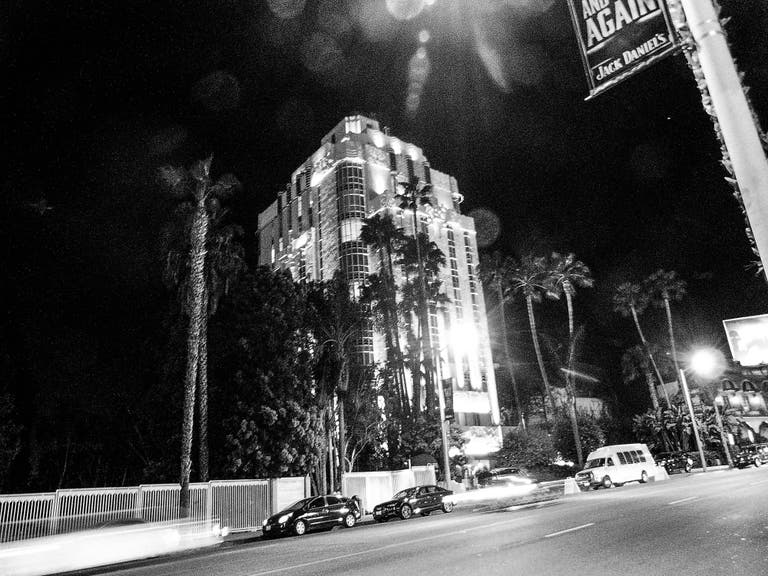
After Carney’s, we are at one of the main hubs of play for the entertainment industry in the Golden Age of Hollywood. The Saddle Ranch Chop House was the Casanova restaurant in the 1930s. Across Sunset stands the majestic Sunset Tower Hotel, the former apartment complex where Frank Sinatra and countless other actors lived and stayed. The restaurant and bar, where you'll see celebrities on a regular basis, offers real-deal, old-school hospitality courtesy of maître d’ Dimitri, an unmistakable star character of today’s Strip. The empty House of Blues down the street is currently being re-developed.
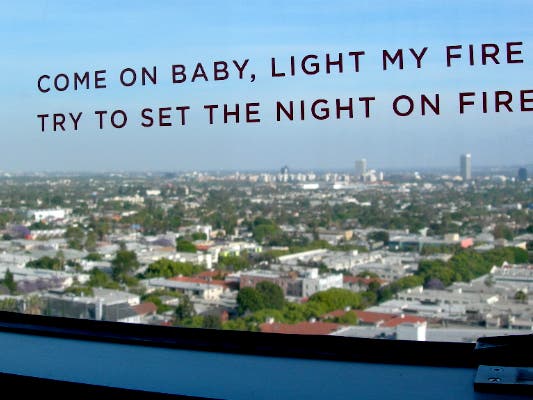
Across the street, the glass box building is now the Andaz West Hollywood hotel, but that property started off in the 1930s as the Gene Autry Hotel and became world famous (or infamous) as the Continental Hyatt House, aka “the Riot House,” the rock ’n’ roll hotel where bands like the Rolling Stones and Led Zeppelin (and the guys from the movie Almost Famous) staged their most extreme, obnoxious debaucheries. Look at the back of the building from the side and you’ll be looking at the exact site from which several rock stars (allegedly inspired by a Keith Richards stunt) threw TV sets out of the windows.
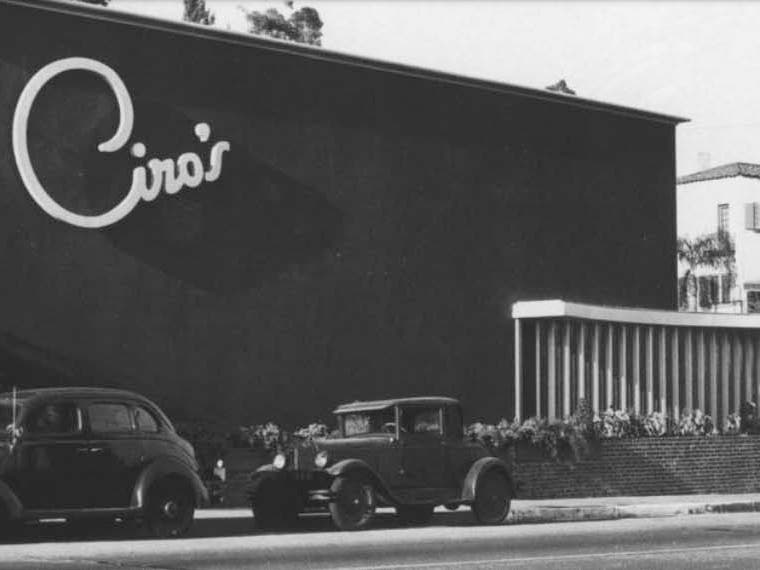
Next door, the Comedy Store has been a mecca of standup comedy since opening in April 1972. The building was the legendary Ciro’s between 1940 and 1957, ground zero of swell entertainment for Hollywood’s smart set. Along with the Trocadero and the Mocambo down the street, these clubs set the pace for Hollywood nightlife when the movies were truly larger than life.
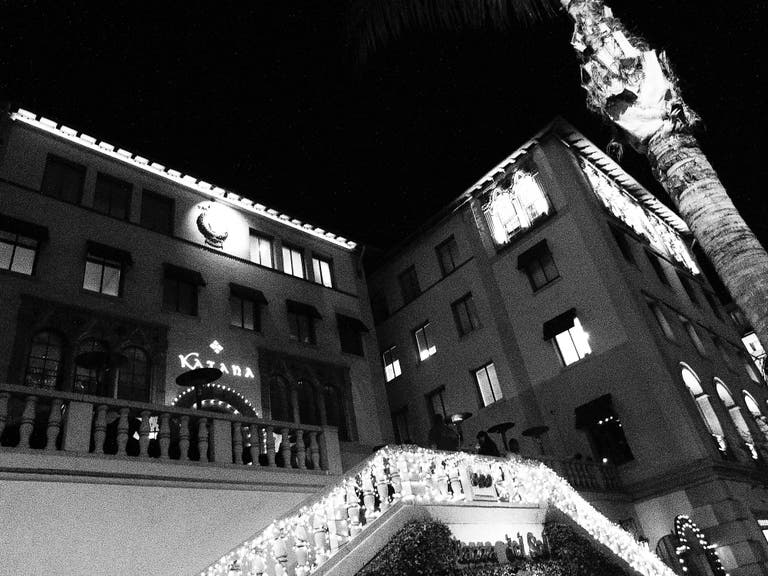
A large building next door to the Comedy Store houses the Japanese fusion restaurant, Katana. While the rest of the structure might appear nondescript, the Piazza del Sol (its current name since 1986) has one of the most colorful histories of any building in the city. Built as the Hacienda Arms luxury apartments in 1927, the building shortly thereafter started housing the “House of Francis,” the movie industry’s favorite “house of ill repute” and site of a notorious vice bust. The building was later owned by Rod Stewart for years until a suspicious fire almost destroyed it in 1983. The building was added as the Hacienda Arms Apartments to the National Register of Historic Places in December 1983.
Across Queens Road from the Piazza del Sol, the parking lot is the former location of the Clover Club, a gangster-owned gambling den so notorious in the 1920s that concerned neighbors paid for a billboard denouncing it as a blatant attempt to bring “Chicago into Los Angeles.”
NEXT: Part Two of our guide to the Sunset Strip takes you from La Cienega to its western end at Doheny, with stops at legendary music clubs and nightlife spots along the way.
